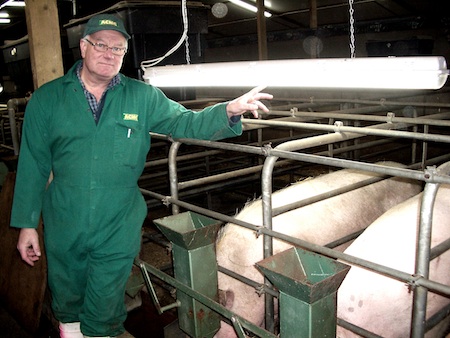
Increasing lighting intensity in a service house over the winter months has resulted in improvements in both farrowing rate and numbers born on an ACMC breeding unit in East Yorkshire.
Fluorescent lights were repositioned from the ceiling to just two feet (O.6 m) above the heads and shoulders of the sows in the service house pens.
This helped produce stronger heats with farrowing rates improved by three per cent to 9O-92 per cent and numbers born by 10 per cent, according to ACMC’s production manager, Malcolm Stead.
“The service house, holding 200 sows and the 30-sow weaning building, were both previously well-lit with strip lights but the extra light intensity definitely showed benefits,” he said. “We found that not only did the direct light help the sows to remain pregnant, it also reduced the weaning-to-service interval. It has other benefits, too, as the stockman can see signs of heat more easily.”
The domestic pig is not naturally an all-year-round breeder and the influence of seasons, particularly light levels, affect fertility. By increasing the hours of light the sows can be tricked into continuing to breed over the winter months, he points out.
The sows need over 100 lux of light falling upon them for between 14 and 16 hours a day, but this can be reduced with the help of a timer as the day length increases.
A similar period is needed for sows in the gestation house, though the lux level only needs to be 50.
Malcolm Stead says that lighting accounts for 17 per cent of electricity used on a farm but recently interest has centred on LEDs (light emitting diodes) due to their reduced power consumption and light concentration.
“The latest building design and layouts are being individually assessed for where, and how much, light is needed in certain areas of the building — rather than just putting up a set of lights at fixed intervals along the roof beams,” he said.
